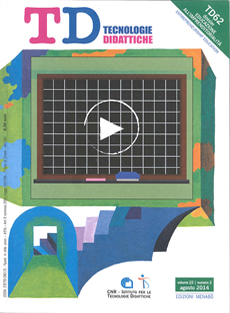The effectiveness of digital technologies in school: a critical review of the empirical evidence
Main Article Content
Abstract
Article Details
Section
Authors who publish with this journal agree to the following terms:
- Authors retain copyright and grant the journal right of first publication with the work simultaneously licensed under a Creative Commons CC BY 4.0 Attribution 4.0 International License.
- Authors are able to enter into separate, additional contractual arrangements for the non-exclusive distribution of the journal's published version of the work (e.g., post it to an institutional repository or publish it in a book), with an acknowledgement of its initial publication in this journal.
- Authors are permitted and encouraged to post their work online (e.g., in institutional repositories or on their website) prior to and during the submission process, as it can lead to productive exchanges, as well as earlier and greater citation of published work (See The Effect of Open Access)
References
BECTA. (2003). What the research says about interactive whiteboards. Retrieved from http://dera.ioe.ac.uk/5318/1/wtrs_whiteboards.pdf
Bonaiuti, G. (2009). Didattica attiva con la LIM: metodologie, strumenti e materiali per la lavagna interattiva multimediale (Vol. 3). Edizioni Erickson.
Calvani, A. (2012). Per un’istruzione Evidence Based. Trento: Edizioni Erickson. Calvani, A. (2013). Evidence Based (Informed?) Education: neopositivismo ingenuo o opportunità epistemologica?. Form@ re, 13(2).
Hattie, J. (2013). Visible learning: A synthesis of over 800 meta-analyses relating to achievement. Routledge.
Higgins, S., Xiao, Z., & Katsipataki, M. (2012). The Impact of Digital Technology on Learning: A Summary for the Education Endowment Foundation. Retrieved from http://educationendowmentfoundation.org.uk/uploads/ pdf/The_Impact_of_Digital_Technologies_on_Learning_ (2012).pdf
Marzano, R. J., & Haystead, M. W. (2009). Evaluation Study of the Effects of Promethean ActivClassroom on Student Achievement. Final Report. Marzano Research Laboratory.
Ranieri, M. (2011). Le insidie dell’ovvio. Tecnologie educative e critica della retorica tecno centrica. Pisa: ETS.
Salvadori, I. (2012). Cosa sappiamo circa l’efficacia della LIM nel contesto scolastico?. Form@ re-Open Journal per la formazione in rete, 12(78), 4-10.
Smith, H. J., Higgins, S., Wall, K., & Miller, J. (2005). Interactive whiteboards: boon or bandwagon? A critical review of the literature. Journal of Computer Assisted Learning, 21(2), 91-101.
Means, B., Toyama, Y., Murphy, R., Bakia, M., & Jones, K. (2010). Evaluation of evidence-based practices in online learning: A meta-analysis and review of online learning studies.
U.S. DoE. (2010). Evaluation of evidence-based practices in online learning: A meta-analysis and review of online learning studies. Washington, D.C., 2010.Retrieved from http://www2.ed.gov/rschstat/eval/tech/evidence-basedpractices/ finalreport.pdf
Vivanet G. (2014). Che cos’è l’evidence based education. Roma: Carocci Editore.

